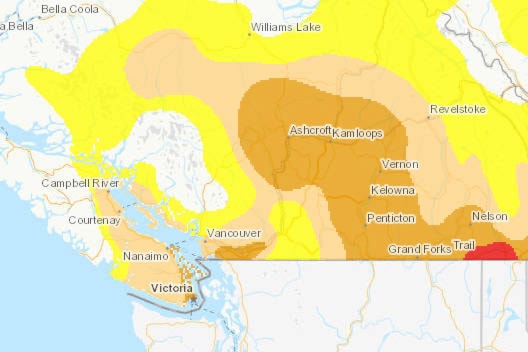With no measurable rainfall so far in July, the lack of precipitation and higher-than-normal temperatures is a “particularly distressing” situation according to those at Environment and Climate Change Canada.
According to Doug Lundquist, a warning preparedness meteorologist with the weather agency, the last measurable rainfall amount recorded at the Comox weather station was June 16.
June is considered the first month of meteorological summer, and the Valley saw 23mm of precipitation during that month - the average is 43mm.
While he said it’s too early to tell if July will set a record for lack of precipitation, there has been no recorded rainfall so far, and the last two weeks of July and the first two weeks of August are generally the driest time of the year in the Valley.
RELATED: Rollercoaster weather expected for June in the Comox Valley
While Victoria recorded the driest spring on record, the Comox Valley saw about 70 per cent of its normal precipitation. However, Lundquist noted heading into the summer months, the temperature shifted to above normal averages.
This past June in the area was the third warmest June on record, three degrees about the average.
“Even if we got normal rainfall amounts (water) evaporates faster (because of the temperatures),” he said.
According to Agriculture and Agri-Food Canada who produces the Canadian Drought Outlook, the Comox Valley is currently classified in a moderate drought. Down Island, most of Victoria and parts of Nanaimo are classified as severe.
Across the province, particularly areas southeast of Trail, there are areas classified as exceptional - the highest rating.
Despite a system tracking toward the Island Friday that may bring a 30 per cent chance of precipitation, Lundquist noted it is “not enough to help,” and added models are showing it is highly likely the Island and larger province will see a hotter than average fall.
photos@comoxvalleyrecord.com
Like us on Facebook and follow us on Twitter
